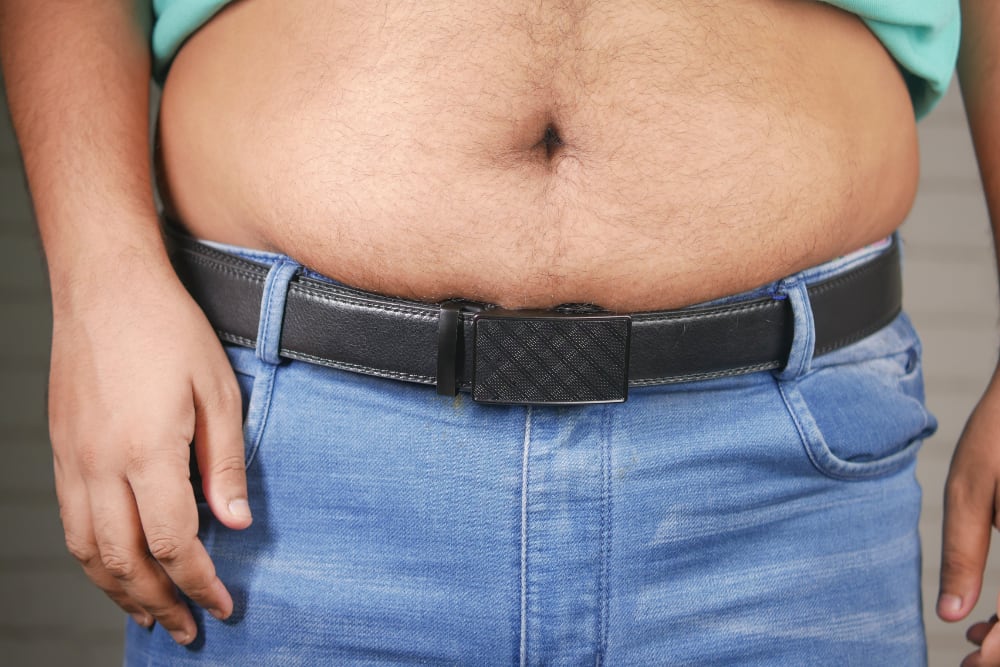
Fat Surrounding the Organs: Understanding Visceral Fat
In the world of health and fitness, fat isn’t just fat. There’s one type that’s particularly insidious, lurking unseen within your body and potentially wreaking havoc on your health. It’s called visceral fat, and understanding what it is, how it accumulates, and how to reduce it is crucial for your well-being.
What Is Visceral Fat?
Visceral fat, often referred to as “fat surrounding the organs” or “visceral adipose tissue,” is a type of body fat that’s stored deep within the abdominal cavity, surrounding vital organs such as the liver, pancreas, and intestines. Unlike subcutaneous fat, which is found just beneath the skin and is more visible, visceral fat is hidden from sight.
This fat isn’t merely an innocent bystander; it’s metabolically active and can have significant implications for your health. This excess fat is associated with an increased risk of various chronic diseases, including heart disease, type 2 diabetes, and certain cancers.
How Does One Obtain Visceral Fat?
The accumulation of visceral fat is a complex process influenced by various factors, including genetics, diet, physical activity, and lifestyle choices. Here’s a closer look at some key factors contributing to its formation:
1. Poor Diet: Diets high in refined carbohydrates, added sugars, and unhealthy fats can promote the storage of visceral fat. Excessive calorie intake, especially from sugary beverages and processed foods, plays a significant role. Learn how to eat correctly and how to burn belly fat.
2. Sedentary Lifestyle: Physical inactivity contributes to this type of fat accumulation. A lack of regular exercise doesn’t just lead to weight gain; it can also lead to the preferential storage of fat in the abdominal region. Join my free 28 Day Workout Challenge and get fit.
3. Genetics: Genetic factors can predispose some individuals to store fat in the abdominal area, including around their organs. However, genetics alone aren’t solely responsible, and lifestyle choices play a crucial role. See my post and learn how to eat for your body type.
4. Stress: Chronic stress can lead to elevated levels of cortisol, a hormone associated with fat storage, especially in the abdominal region. This stress-induced fat is often visceral. See my post on stress and weight gain.
5. Sleep Deprivation: Poor sleep quality and insufficient sleep duration have been linked to visceral fat accumulation. Sleep is essential for regulating hormones that influence appetite and fat storage. Learn more about the importance of sleep.
Continued after advertisement
Reducing Visceral Fat
While visceral fat can be stubborn, it’s not invincible. Here are some strategies to help you reduce it and improve your health:
1. Adopt a Healthier Diet: Focus on whole, unprocessed foods, plenty of vegetables, lean proteins, and healthy fats. Reduce your intake of sugary foods, refined carbohydrates, and trans fats.
2. Exercise Regularly: Incorporate both aerobic exercise (such as walking, jogging, or cycling) and strength training into your routine. Exercise not only burns calories but also helps reduce this fat.
3. Manage Stress: Practice stress-reduction techniques like meditation, yoga, or deep breathing exercises. Reducing chronic stress can help lower cortisol levels and visceral fat.
4. Get Quality Sleep: Aim for 7-9 hours of quality sleep per night. Establish a regular sleep schedule and create a relaxing bedtime routine.
5. Stay Hydrated: Proper hydration supports overall health and can aid fat metabolism. Drink plenty of water throughout the day.
6. Limit Alcohol Intake: Excessive alcohol consumption can contribute to visceral fat accumulation. Moderate your alcohol consumption or consider abstaining. Learn more in my article about what does alcohol do to your body.
7. Monitor Your Progress: Keep track of your diet, exercise, and any changes in your waistline. Monitoring your progress can help you stay motivated and make necessary adjustments.
Visceral fat, the hidden threat surrounding your organs, is a health concern that deserves attention. While genetics can play a role, lifestyle choices are key in determining the amount of this fat you carry. By adopting a healthier diet, staying active, managing stress, prioritizing sleep, and making other positive lifestyle changes, you can reduce this fat and lower your risk of associated health issues.
So, the next time you ponder the question, “What is visceral fat?” Remember that it’s not just an abstract concept. It’s a tangible aspect of your health that you have the power to influence. By taking proactive steps, you can shed the visceral fat that may be lurking within and pave the way for a healthier, happier future.




